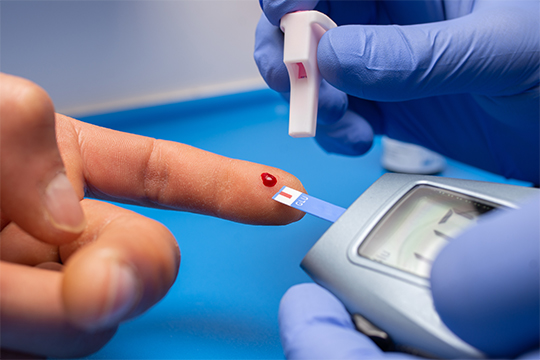Home > Disease and Treatments > Surgical Thrombectomy: A Critical Procedure for Blood Clot Removal
Surgical Thrombectomy: A Critical Procedure for Blood Clot Removal
Surgical Thrombectomy stands as a vital surgical intervention designed to eliminate blood clots obstructing arteries or veins, thereby safeguarding the health and function of affected tissues. This intricate procedure involves a combination of precise techniques to restore unimpeded blood flow and prevent damage to surrounding structures.
Understanding the Importance
In our circulatory system, blood typically flows freely through arteries and veins, providing oxygen and vital nutrients to our body's tissues. However, at times, the blood may thicken and clot within these vessels, posing a significant risk. When a clot forms, it hinders blood circulation, potentially leading to a range of issues, including:
- Swelling, pain, numbness, or tingling in the affected limb
- A sensation of coldness in the clot-affected area
- Muscle discomfort
- Enlarged veins (known as postthrombotic syndrome)
- Tissue necrosis (death of tissue)
- Organ dysfunction
- Pulmonary embolism, a life-threatening condition where a clot travels to the lung, causing breathing difficulties and risking life.
The Role of Surgical Thrombectomy
Surgical thrombectomy is primarily indicated when an individual presents with a substantial clot burden or when the clot's presence results in severe tissue damage. It serves as an effective means of clot removal and the restoration of normal blood flow. During this procedure, a skilled surgeon:
- Makes an incision into the affected blood vessel.
- Removes the obstructing clot meticulously.
- Undertakes any necessary repairs to the blood vessel.
- Restores blood circulation to the area.
- In select cases, the surgeon may employ additional tools, such as a balloon or specialized devices, to assist in maintaining the vessel’s patency (openness).
Conditions Treated by Thrombectomy
Stroke
Thrombectomy is often used to treat ischemic strokes, which occur when a blood clot obstructs a cerebral artery, leading to a lack of blood flow to the brain. This procedure helps remove the clot and restore blood flow, potentially preventing significant brain damage.
Deep Vein Thrombosis (DVT)
DVT is the formation of blood clots in deep veins, typically in the legs. Thrombectomy may be considered in severe cases or when other treatments like anticoagulants (blood thinners) are ineffective.
Pulmonary Embolism (PE)
PE occurs when a blood clot travels from a deep vein, usually in the legs, to the lungs, causing a blockage in the pulmonary arteries. Thrombectomy is used in emergency situations to remove the clot and restore lung function.
Peripheral Arterial Disease (PAD)
PAD is characterized by narrowed arteries in the limbs, often due to atherosclerosis. In some cases, thrombectomy is performed to remove blood clots obstructing blood flow in the peripheral arteries.
Acute Limb Ischemia
This condition involves a sudden decrease in blood flow to a limb, often caused by arterial embolism or thrombosis. Thrombectomy is utilized to promptly remove the clot and salvage the affected limb.
Renal Artery Thrombosis
Renal artery thrombosis occurs when a clot forms in one of the arteries supplying blood to the kidneys. Thrombectomy may be necessary to restore blood flow to the kidneys and prevent kidney damage.
Organ Transplants
In cases where blood clots develop in blood vessels connected to transplanted organs, thrombectomy may be performed to ensure proper blood supply to the newly transplanted organ.
Understanding the Risks:
Like any surgical procedure, surgical thrombectomy carries certain risks, including:
- Excessive bleeding, which, in severe cases, may be life-threatening.
- The potential for postoperative infection.
- Damage to the blood vessel at the site of the clot.
- Anesthesia-related reactions.
- The risk of pulmonary embolism (though this is typically averted by the procedure).
Additionally, there is a possibility that a new clot may form following the thrombectomy. It's crucial to recognize that individual risks may vary, influenced by factors such as overall health, clot characteristics, and clot duration. It is advisable to engage in an open dialogue with your healthcare provider to address any concerns or questions you may have regarding this procedure.
Postoperative Care and Follow-Up
Following the procedure, a recovery period is essential. Patients spend time in a recovery room, where vital signs are monitored. The duration of hospitalization varies depending on individual circumstances. Patients may be prescribed medications to prevent new clot formation and manage pain, if necessary.
Early mobilization, wearing compression stockings, and smoking cessation are often recommended to reduce clot recurrence risks. Follow-up appointments are scheduled to monitor progress, and imaging tests, such as venograms, may be performed to evaluate vascular health.
Surgical thrombectomy is a crucial procedure for managing blood clots.Its benefits in restoring blood flow and preserving tissue health are significant. As with any medical intervention, open communication with your healthcare provider is essential for a thorough understanding of the procedure and personalized care.
Read our success stories highlighting the exceptional outcomes achieved through thrombectomy procedures performed at Royal Care, emphasizing our dedication to superior patient care and innovative medical interventions.





